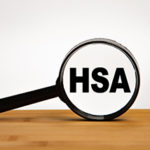
A new era of retirement planning begins with SECURE 2.0 Act final regulations
With the IRS’s final regulations under the SECURE 2.0 Act, specifically around Roth catch-up contributions, there is a new opportunity to rethink how your retirement strategy aligns with your tax position and long-term wealth goals.
Released on September 15, 2025, these regulations introduce key changes to how catch-up contributions are handled for retirement plan participants aged 50 and older, particularly those with higher incomes. An overview of the changes and planning insights are detailed below.
Overview of the catch-up contribution changes
The SECURE 2.0 Act originally passed in 2022 included a provision requiring that catch-up contributions for high-income individuals be treated as Roth (after-tax) contributions. The new final regulations clarify how that rule will be applied:
- Who is affected? If you earned more than $145,000 in wages from your employer in the prior year, your catch-up contributions, starting in 2027, must be designated as Roth.
- What does this mean? Instead of receiving a tax deduction now (as with traditional 401(k) contributions), your contributions will be after-tax. However, your future withdrawals will be tax-free, potentially offering significant long-term advantages.
- What is new in the final regulations? The IRS now allows employers to aggregate wages from certain employers to determine eligibility and provides guidance on error corrections.
Strategic opportunity
For high-net-worth individuals, this regulatory shift presents a strategic window. Following are key opportunities to consider and discuss with your advisors:
1. Tax Diversification
Roth accounts offer tax-free growth and withdrawals, an attractive hedge if you anticipate higher tax rates in retirement. This change forces a reassessment: How balanced is your current mix of pre-tax and post-tax retirement assets?
2. Estate Planning Benefits
Unlike traditional accounts, Roth IRAs have no required minimum distributions (RMDs) during the original owner’s lifetime, making them a powerful tool for intergenerational wealth transfer.
3. Enhanced Contribution Limits for Ages 60–63
For those aged 60 to 63, the SECURE 2.0 Act allows for higher catch-up contributions starting in 2025. This enables you to allocate more into Roth accounts during peak earning years, just as your retirement vision begins to solidify.
4. Take full advantage of a ROTH 401k
In addition to making catch up contributions to a ROTH, consider allocating 100% of your 401k contributions to a ROTH 401k, if your plan allows.
When do these rules take effect?
The mandatory Roth catch-up rule begins for taxable years after December 31, 2026. However, plan sponsors can voluntarily adopt the rules sooner under a “good faith” interpretation.
While there’s a transition period until the end of 2025, proactive planning now ensures more flexibility and control with your retirement strategy.
How Keiter can help
At Keiter, we do more than respond to changes…we help you leverage them. For questions specific to your situation, contact your Keiter Opportunity Advisor. | Email or call: 804.747.0000
Source: Treasury, IRS issue final regulations on new Roth catch-up rule, other SECURE 2.0 Act provisions | IRS.gov
About the Author
The information contained within this article is provided for informational purposes only and is current as of the date published. Online readers are advised not to act upon this information without seeking the service of a professional accountant, as this article is not a substitute for obtaining accounting, tax, or financial advice from a professional accountant.



